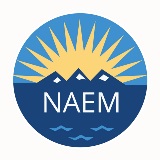7 Facts that Frame the Future of EHS&S Management

83 percent of responding companies said their boards of directors currently review (or are planning to start reviewing) the company's sustainability metrics:
The connection between EHS&S data and the company's bottom line is now crystal clear. As such, boards of directors at the majority of the companies we surveyed regularly review sustainability data. This feedback cycle is a necessary component of corporate response to larger environmental and social issues and we'll keep our eye on it as the number of companies paying attention to this crucial information continues to nudge up.
49 percent of responding companies publish an integrated report, or are planning to: Integrated reporting, or communicating environmental and social metrics alongside financial performance, was once considered a horizon concept for many publicly traded companies. That is no longer the case. Forty-nine percent of respondents - nearly half -- utilize or are currently evaluating integrated reporting. Clorox, Entergy, Intel, Pfizer and Southwest Airlines are all examples of public companies that recently produced an integrated annual report.
We see this trend on the rise alongside the reports that boards of directors seek environmental and social information to get the full picture of their company's performance. As environmental and social metrics continue to become key performance indicators for companies, we expect the number of integrated reports to rise as well.
32 percent are either using or evaluating the use of smart sensors: Smart sensors are devices that collect information from the physical environment and use built-in computing resources to perform predefined functions. Their potential use cases in an EHS&S context are numerous: They can monitor effluent outflow, moisture content, and even be worn to alert workers if they use unsafe postures. Many EHS&S leaders are currently in experimenting with these tools but the results are inspiring and promising. One respondent explained how smart sensors could potentially change her work:
"When I worked [in aerospace] we had to take down two million gallon above-ground storage tanks that were filled with jet fuel to do a required regulatory inspection every ten years. It's an integrity test of the tank so it doesn't fail. But think about a sensor that you could have to do predictive corrosion, and oh by the way that sensor can then do 3D modelling on the intricacies of actual material, the steel. And then you could go in with drones, to do up front, you know video, you could even take samples with a drone. I mean just think of the cost, the health and safety considerations, down-time to the business. It's amazing."
Drones, machine learning and artificial intelligence are also gaining popularity.
42 percent say publicly that climate change is a business risk: A decade ago, it was newsworthy when a company made public goals around energy and carbon emissions reductions. Now, the stakes are higher and public goals are a baseline for good corporate citizenship. Forty-two percent of respondents to the NAEM survey have publicly stated climate change is a business risk and an additional 20 percent are planning to make a similar public statement. An additional 48 percent said their companies support public policy to address climate change.
72 percent of respondents are purchasing or evaluating purchasing renewable energy from a third party: Given the increased attention to climate change, it is no surprise that energy management and renewable energy generation are also common practices among those we surveyed. Our data demonstrates that companies understand their crucial role in reducing greenhouse gas emissions and in pushing for policy changes that can even the playing field, and create incentives for the all companies to make the changes that will benefit the environment.
47 percent have, or are exploring circular economy initiatives: Companies have also moved beyond the climate conversation to consider their impact in other areas of the climate, like waste and water. The actual functions that make a circular economy like zero waste programs and product take-back are also gaining traction.26 percent are using or evaluating ecosystem services valuation: After years of being a horizon idea, it was noteworthy to see that 26 percent of respondents currently use or are evaluating using evaluating ecosystem services valuation or other formal programs to recognize the value they gain from nature. For example, water is currently very cheap, but in a warming world, with increased droughts, it may become more expensive. Ecosystem valuation allows companies to measure the economic value they receive from these services by comparing what they get for free to the least cost best alternative. By considering the cost of alternative measures, a company can then justify the costs of, for example, water restoration projects because they will protect a resource that ultimately benefits the company.
The ecosystem valuation trend is worth watching in the years to come because it demonstrates that companies are looking for new ways to measure their impact and the impact of the ecosystem services they use to create their products.
What was your favorite statistic? Tag us on Twitter @NAEM to let us know!
About the Author





